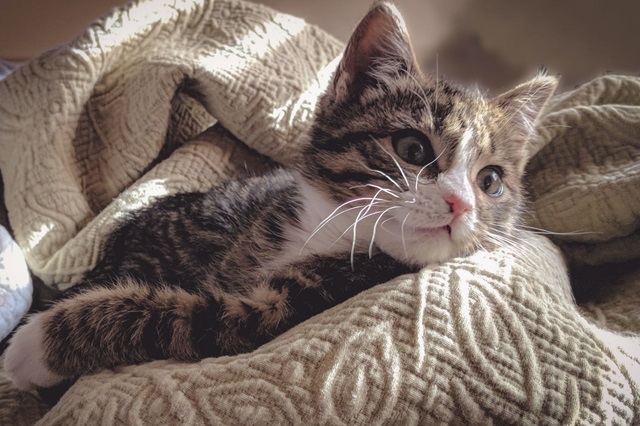Cats are fascinating creatures that often leave their owners puzzled with their peculiar habits. Although it may be impossible to understand their thoughts entirely, it is essential to comprehend the meanings behind their behaviors. By doing so, you can identify your feline’s feelings and ensure they are comfortable in their environment.
Here is a comprehensive guide that sheds light on common and unusual behaviors of cats and what they could signify.
Purring
Purring is a vibrating sound that cats make with their throats, which they do throughout their lives, even as two-day-old kittens. Scientists have yet to understand the exact mechanism behind purring, given that cats lack any anatomical features that enable them to do so.
Typically, a cat purrs when it feels happy, friendly, and appreciative. However, it can also use purring to soothe pain when stressed or sick. For instance, cats giving birth often purr to alleviate the pain. In most cases, a purring cat is a contented cat.
Vocalization
As a cat owner, you must have noticed the diverse range of sounds cats produce. While meowing is their primary form of communication, cats have many variations and meanings behind their vocalizations, including chirping, hissing, snarling, growling, and wailing.
The Friendly, Cute Meow

A tiny meow from your cat is often a way of saying ‘hi’ and asking for some love. Responding with a gentle head rub or affectionate pat lets them know that you care.
The Loud, Disgruntled Meow
A loud and intense meowing could indicate that your cat is unhappy or in need of something. It could be asking for food, to be let out of the room or house, or simply bored. In some cases, a loud meow could also signify that your cat is unwell, and a visit to the vet may be necessary.
Chirping and Chattering
When a bug or rodent intrudes, your cat may start chirping or chattering its teeth, preparing for hunting. This behavior is a reminder that cats are natural predators.
Growling, Wailing, and Hissing
An angry or threatened cat will use various sounds and signals, including growling and wailing, to communicate its feelings. Before attacking, they will hiss to intimidate intruders. In addition to vocalizations, an angry cat will take a defensive stance, flatten its ears, and puff up its fur on the back and tail.

Sniffing
Cats are inquisitive creatures that love exploring their environment by sticking their noses into everything. Similarly, cats may sniff their owner’s face to sense their scent, which provides a sense of security.
If you find your cat hanging around with its mouth wide open, resembling Munch’s ‘The Scream,’ don’t fret. Called the Flehmen response, it’s your cat’s way of thoroughly analyzing interesting scents in its surroundings.
Displaying the Belly
Cats relax by lying on their backs with their legs wide open, similar to humans. Since exposing their stomach is a sign of vulnerability, consider it an honor if your cat displays its belly in front of you. It means they trust you and feel comfortable around you. In some rare cases, a cat might even allow you to pet its tummy.
In conclusion, understanding your cat’s behavior is essential to ensure they are happy and healthy. Although cats may be enigmatic creatures, you can build a deeper relationship with your feline companion by learning to interpret their behaviors.


